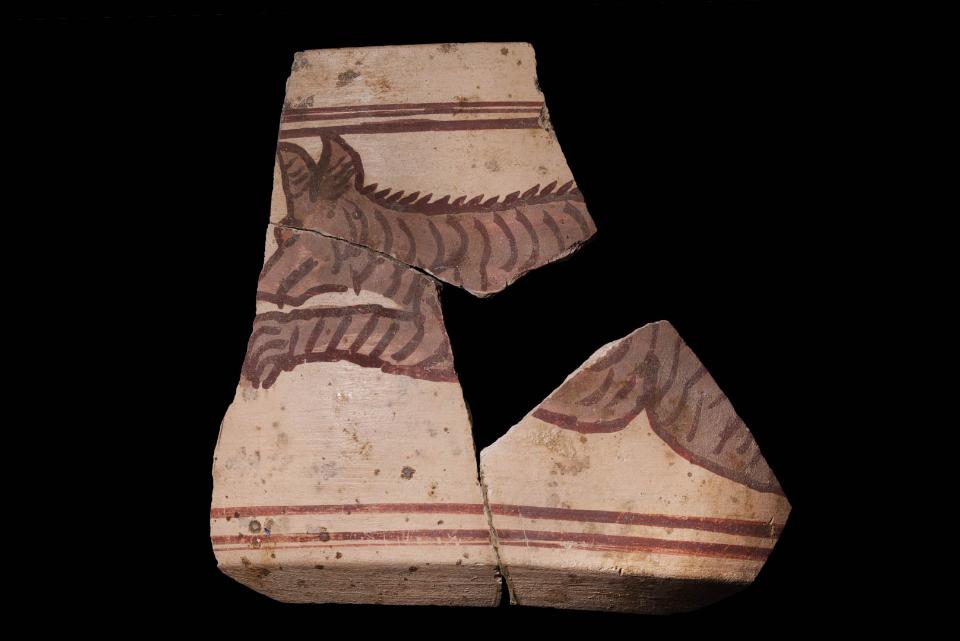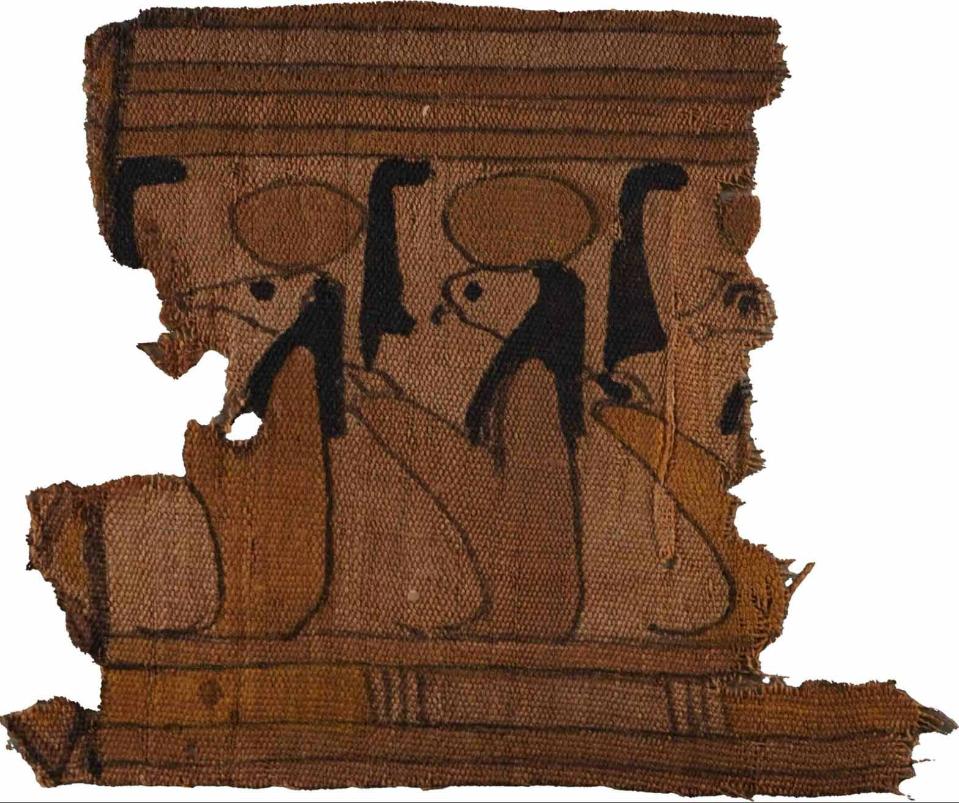Identification of Species
How do we know which creatures lived in the Nile Valley in ancient times? Archaeologists make identifications based on fragments of bone and teeth, and from very stylised depictions in art. Nevertheless it is sometimes difficult to identify the precise species from this evidence.
Ceramic jar with painted decoration depicting (from top to bottom): water, gazelle or goats, desert hills, trees/bushes, and perhaps man-made enclosures. Egypt; Naqada II Period (3600-3200bc). E.3035
Ceramic bowl with incised decoration depicting cattle and possibly a giraffe. Meroë, Sudan; Meroitic Period (542bc-350ad). E.8601
Faience figurine of a feline, possibly a savannah cat (domestic cat/serval cross). Abydos, Egypt; Middle Kingdom (2055-1650bc). E.160
Fragment of ceramic beaker with painted decoration depicting a hyena. Meroë, Sudan; Meroitic Period (542bc-350ad). E.8340

Image by Julia Thorne, Tetisheri
Carnelian bead in the form of a an animal's head - perhaps a hyena? The animal has whiskers, so is not a baboon or monkey. Another possibility is a lion, however the central crest running from the forehead and down the back of the head looks similar to the crest of hair that hyenas raise when they feel threatened, to make themselves look larger. Egypt; Dynastic Period (3150-30bc). E.9311

Image by Julia Thorne, Tetisheri
There are some animals whose identities remain a mystery. The creature associated with the god Seth has been variously identified as an anteater or a pig. Even some depictions of shrews look similar to the distinctive long-nosed features of this god.
Stela dedicated to the Egyptian god Seth, depicted as a human man with the head of an unidentified animal. Naqada, Egypt; New Kingdom (1292-1077bc). Manchester Museum 4528

Was Seth an anteater? The shape of the snout looks similar to images of the god. But there are no known depictions that are definitively of anteaters in ancient Egyptian contexts.
,(1)-956x637.jpg)
Image by Theo Kruse Burgers' Zoo, CC BY-SA 4.0
Mummy wrapping with illustrated demons from the Book of the Dead. The demon on the left probably represents a shrew. Egypt; Ptolemaic Period (310-30bc). E.9364

Previous: Sky
Next: Animals and the Divine